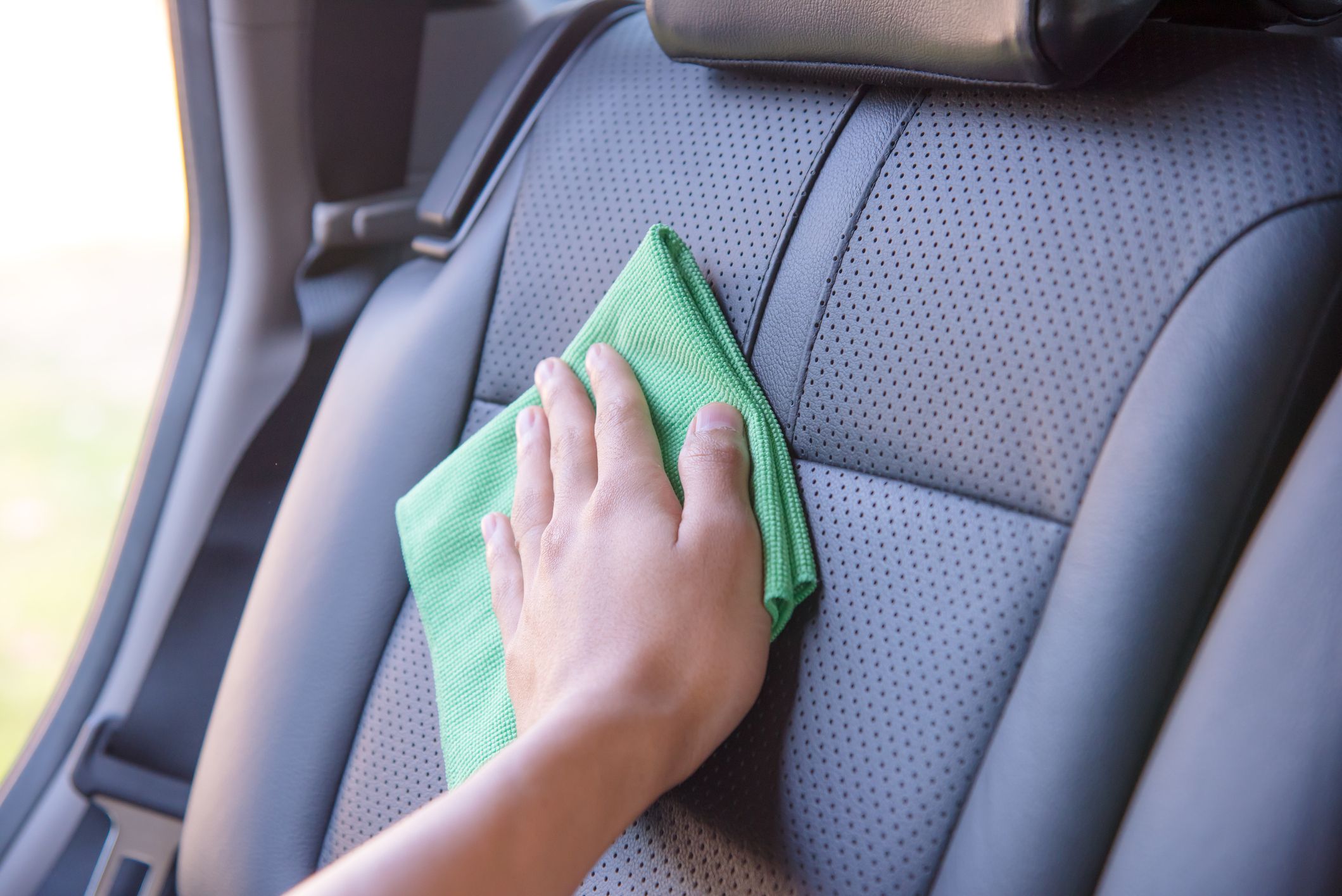Want that fresh, clean car feel without breaking the bank? This comprehensive guide reveals the secrets to achieving a sparkling clean vinyl car interior at home, from tackling everyday dust to banishing stubborn stains. We’ll equip you with the knowledge and techniques to keep your vinyl seats looking like new. Ready to give your car’s interior a serious upgrade? Let’s dive in!
Prepping Your Vinyl for a Deep Clean
Before you begin, a little prep work goes a long way. First, consult your car’s owner’s manual—it might contain specific cleaning recommendations or precautions for your vinyl type. Next, grab your vacuum cleaner (with an upholstery attachment, if you have one) or a brush and remove any loose debris. This prevents scratching during cleaning. Finally, and this is crucial, test your chosen cleaning solution on a hidden area. This simple step can save you from potential discoloration or damage.
Everyday Cleaning for Dust and Dirt
For routine cleaning, distilled water and a microfiber cloth might be all you need. If you encounter slightly more stubborn dirt, a mild soap and water solution is your next best bet. Mix about a quarter cup of a gentle soap, like Dreft baby detergent or a dedicated vinyl cleaner like 303 Fabric & Vinyl Cleaner, with a gallon of water. Apply the solution with a damp (not soaking wet!) cloth, working in small, gentle circles. Rinse with clean water and dry immediately with a clean microfiber cloth. Keeping the vinyl dry is essential for preventing mildew.
Targeting Stubborn Stains
Spills and stains happen. For tougher messes, a dedicated vinyl stain remover may be necessary. As always, test any new product in a hidden spot first. A soft-bristled brush (an old toothbrush works great!) can help lift embedded dirt, especially in seams. For truly stubborn stains, a Magic Eraser might be effective, but proceed with extreme caution. These erasers are abrasive, so test gently first to avoid damaging your vinyl. For greasy stains, a bit of dish soap mixed with warm water often works wonders. Rinse and dry the area thoroughly afterward.
Post-Cleaning Care and Protection
After cleaning, dry your vinyl seats completely with a clean microfiber cloth. To keep your seats looking their best, consider applying a vinyl conditioner with UV protection. This helps prevent fading and cracking caused by sun exposure and makes future cleaning easier. Some experts suggest that regular application of a UV protectant can significantly reduce the effects of sun damage, but research is ongoing.
Maintaining that “Just Detailed” Look
Prevention is the best medicine! Regularly wiping down your seats can help prevent dirt buildup. Consider using seat covers, especially if you have kids or pets, to protect against everyday wear and tear. Parking in the shade or using sunshades can also minimize sun damage. Another trick is to vary your parking spot, so the sun doesn’t always bake the same area. On scorching days, cracking the windows slightly can reduce heat buildup, further protecting your vinyl.
Eco-Friendly Cleaning Options
For a greener approach, a mixture of baking soda and vinegar can be surprisingly effective. Remember to test this in a hidden area first. You can also explore commercially available eco-friendly vinyl cleaners.
Stain-Specific Solutions
Here’s a quick guide for common car seat stains:
- Coffee: Blot immediately and then try a mixture of equal parts water and white vinegar.
- Grease: Dish soap and warm water often work well.
- Ink: Dabbing with rubbing alcohol on a cotton ball might do the trick.
- Pet Messes: An enzyme cleaner designed for pet stains is your best bet. Avoid using ammonia-based cleaners on vinyl, as they may cause damage over time.
What is the Best Thing to Clean Vinyl Car Seats With?
Choosing the best cleaner for your vinyl car seats depends on factors like the level of soiling and your cleaning preferences. Distilled water is ideal for light dusting, while a mild soap and water solution (like Dreft or a dedicated vinyl cleaner like 303 Fabric & Vinyl Cleaner – 1/4 cup soap to 1 gallon water) is better suited for general cleaning. For tougher grime, a commercial-grade vinyl cleaner (like Star Brite Vinyl Clean) might be necessary. Always test any cleaner on a hidden area first.
The right tools are just as important. Avoid abrasive materials. Soft sponges or microfiber cloths are your best bet.
Step-by-Step Cleaning Process:
- Prep: Remove loose debris and consult your owner’s manual.
- Clean: Apply your chosen cleaner with a damp cloth, working in small sections.
- Rinse: Wipe away any residue with a clean, damp cloth.
- Dry: Thoroughly dry with a microfiber towel.
What is the Best Cleaner for Vinyl on Cars?
Just like your clothes, vinyl comes in different types, each calling for slightly different cleaning methods. Textured vinyl may trap dirt and dust easier than the smooth vinyl on your seats. The solution might be to use different approaches. Smooth vinyl is generally easy to clean with a simple wipe, while textured vinyl may benefit from using a soft brush to loosen dirt and dust from grooves and stippling.
Soap and water are great for regular vinyl cleaning. A dedicated vinyl protectant cleaner is a step up, offering cleaning and conditioning. Many include UV protection, which acts like sunscreen for your car’s interior.
For stains, a baking soda and water paste can be effective. For stubborn stains, a diluted all-purpose cleaner (APC) and a microfiber cloth can work wonders.
DIY vs. Pro Cleaning:
| Cleaner Type | Pros | Cons | Example Products |
|---|---|---|---|
| DIY (Soap & Water) | Budget-friendly, readily available, gentle | May not tackle tough stains | Dish soap (Dreft), Water |
| Commercial | Cleans and conditions, offers UV protection, convenient | Can be more expensive | Meguiar’s, 303 |
| APC | Powerful cleaning, versatile | Potential for damage if not diluted properly | Various brands |
| Baking Soda Paste | Gentle abrasive action, good for some stains, inexpensive | Can be messy, requires dwell time | Baking soda, water |
| Vinyl Wipes | Convenient for quick cleanups | May not be effective on heavy stains, can dry out quickly | Armor All, Chemical Guys |
Prevention is key to maintaining your vinyl’s appearance. Regular cleaning, UV protectant sprays, and seat covers can protect against dirt, sun damage, and wear and tear. As Bright Auto Upholstery suggests, “Do use a mild cleaning solution. Try 1/4 cup of soap (such as Dreft Laundry Detergent or 303 Fabric & Vinyl Cleaner) to 1 gallon of fresh water.”
What is the Best Cleaner for Vinyl Seating?
Whether it’s car seats, boat seats, or furniture, the best cleaner for vinyl seating depends on several factors. Dish soap and water are often sufficient for regular cleaning, but commercial cleaners offer targeted solutions and often include UV protection. Homemade cleaners, like baking soda paste or diluted vinegar, can also be effective. Always test any cleaning solution in an inconspicuous area first.
Cleaning Process:
- Prep: Vacuum and remove loose debris.
- Clean: Apply cleaner sparingly and work in gentle, circular motions.
- Rinse (if necessary): Wipe away residue with a damp cloth.
- Dry: Dry thoroughly with a microfiber cloth.
Maintenance is key for long-lasting vinyl. Regular cleaning and UV protectants can prevent damage. Avoid harsh chemicals and abrasive cleaners, which can strip the vinyl’s protective coating. Some studies suggest that regular application of a UV protectant can reduce sun damage, but research is ongoing.
| Cleaner Type | Pros | Cons |
|---|---|---|
| Dish Soap & Water | Gentle, cost-effective, readily available | May not be powerful enough for heavy stains |
| Commercial Cleaners | Specialized formulas, often include UV protection | Can be more expensive |
| DIY Cleaners | Budget-friendly, generally effective | Requires testing, effectiveness can vary, less convenient |
Transform your backyard oasis into a peaceful sanctuary by discovering the best way to block noise in a yard.
- Small Corner Kitchen Ideas: Maximize Style In Tight Spaces - January 1, 2026
- Kitchen Counter Corner Ideas: Style Your Awkward Angles Now - December 31, 2025
- Best Finish for Butcher Block Countertops: Choosing the Right Option - December 30, 2025










